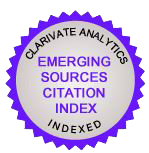The Relevance of George Sand’s "Lucrezia Floriani" for Dostoevsky’s "Netochka Nezvanova"
Keywords:
Dostoevsky, Netochka Nezvanova, George Sand, Lucrezia Floriani, psychologyAbstract
Analyses of Dostoevsky’s unfinished 1849 novel, Netochka Nezvanova, have focused on its connection to Dostoevsky’s biography and to his earlier and later works; to the tradition of German Romanticism; to the tradition of the Bildungsroman and that of the confession; to literary depictions of the artist and the dreamer; to ideas about education; to psychological interpretations, including to the issue of codependency.Scholars have discussed influences on Netochka Nezvanova, including, among others, E.T.A. Hoffmann, Vladimir Odoevsky, Balzac, Eugène Sue, Sir Walter Scott, Dickens, Rousseau, Goncharov, Gogol, Pushkin, Herzen, and George Sand. When scholars speak about George Sand in connection with Netochka Nezvanova, some suggest that her novels, Consuelo and Lucrezia Floriani, were important to Dostoevsky in the emphasis of the future trajectory of the novel, in Netochka’s future life as a great singer.
In this article, I attempt to prove that some of the major features of Netochka Nezvanova that have links to Lucrezia Floriani have almost nothing to do with the theme of the singer-to-be, but rather, have to do, almost exclusively, with aspects of psychology.
I focus on these links between the Dostoevsky and George sand novels: thematic concerns and parallels that are intertwined with major characters’ personality traits and behavior; a few subplots; and a dog. Dostoevsky took the core of Lucrezia Floriani, a story of obsession, passion, and illusion – in love – that can corrupt; and applied that situation to obsession, passion, and illusion in art and human relationships.
Downloads
Downloads
Published
How to Cite
Issue
Section
License

CC BY-SA: This license allows reusers to distribute, remix, adapt, and build upon the material in any medium or format, so long as attribution is given to the creator. The license allows for commercial use. If you remix, adapt, or build upon the material, you must license the modified material under identical terms.
CC BY-SA includes the following elements:
BY ![]() – Credit must be given to the creator
– Credit must be given to the creator
SA ![]() – Adaptations must be shared under the same terms
– Adaptations must be shared under the same terms
Authors who publish with this journal agree to the following terms:
1. Authors retain copyright and grant the journal right of first publication with the work simultaneously licensed under a Creative Commons Attribution License that allows others to share the work with an acknowledgement of the work's authorship and initial publication in this journal.
2. Authors are able to enter into separate, additional contractual arrangements for the non-exclusive distribution of the journal's published version of the work (e.g., post it to an institutional repository or publish it in a book), with an acknowledgement of its initial publication in this journal.
3. Authors are permitted and encouraged to post their work online (e.g., in institutional repositories or on their website) prior to and during the submission process, as it can lead to productive exchanges, as well as earlier and greater citation of published work (See The Effect of Open Access).












